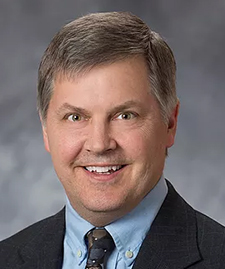
[image_credit]Creative Commons/Chad Fennell[/image_credit]
That’s why we, as representatives of Minnesota’s timber, agriculture, and conservation communities, have come together to highlight the benefits and importance of natural areas, working lands, and wise land management practices that benefit our economy and environment.
To ensure that our cities and rural communities remain healthy, diverse, and resilient, our lands and waters must be protected and made both more productive and sustainable for people and nature.
Invest now to improve the economy and our quality of life
Our natural areas and working lands — farms, ranches, and forests — are critical to current and future generations. By investing in them now, we can improve our economy and our quality of life in both the short run and the long-term.

[image_caption]Mike Birkeland[/image_caption]
A new, broad-based, and increasingly bipartisan consensus is emerging about the urgent need to take action to curb the worst effects of climate change. Natural and working lands can, and need to be, a big part of the solution, and more clearly needs to be done (see the Minnesota Pollution Control Agency’s recently released report on greenhouse gas emissions sources).
A plethora of benefits
Minnesota’s farms and forests, and our treasured natural and working lands, offer a plethora of benefits, including carbon sequestration. Safeguarding and managing our natural and working lands can lock up carbon in trees and forest products for the long-term.
These solutions — whether we’re talking about cover cropping or reduced tillage for farmers, planting trees or active forest management, avoiding habitat loss or wetland restoration — need to be at the center of climate discussions.

[image_caption]Ann Mulholland[/image_caption]
And it’s not just the practices themselves. We must make decisions that support the people who are on the ground working in these sectors of our economy. We know that farmers, loggers, resort owners, and our entire natural resource-based economy are vulnerable due to warmer and wetter weather. We can already see the impact in the form of flooded farm fields, increased spread of plant and animal disease, and forest fires, to name a few examples.
Our natural and working lands hold immense potential to not only reduce emissions, but also sequester carbon — taking it out of the atmosphere where it’s contributing to climate change and putting it back in the soil.
A powerful offset
In Minnesota, natural climate solutions could offset nearly 20% of our state emissions — 26 million metric tons – equal to removing 750,000 mid-sized cars from circulation annually or taking 7 coal plants offline. Plus, we can store even more carbon from durable products derived from working lands including wood products.

[image_caption]Anne Schwagerl[/image_caption]
Cover cropping, for example, can require purchasing new equipment, seed, and fuel — and it needs to be successfully incorporated into an existing crop rotation, all of which cost money many farmers don’t have. Ramping up the production and planting of seedlings to help reforest parts of Minnesota requires more resources.
Smart and strong public investment can incentivize and accelerate work happening on the ground and ensure that our natural and working lands are maximizing their potential to help us tackle climate change while adding jobs and ensuring a strong economy.
We need natural climate solutions — and investing in family farmers, forest managers, and others — to be a priority for the Legislature, for the governor and state agencies, and for companies and communities too.
Our natural areas and working lands are economic, ecological, and environmental strengths for Minnesota. We must protect and build upon them.
We’re united in this. We hope Minnesotans and our leaders are too.
Mike Birkeland is the executive vice president of Minnesota Forest Industries & Minnesota Timber Producers. Ann Mulholland is the director of The Nature Conservancy in Minnesota. Anne Schwagerl is the secretary of the Minnesota Farmers Union.
WANT TO ADD YOUR VOICE?
If you’re interested in joining the discussion, add your voice to the Comment section below — or consider writing a letter or a longer-form Community Voices commentary. (For more information about Community Voices, see our Submission Guidelines.)







I agree with this. As I live in the Driftless area of Southeast MN, water and water quality are very important issues. There is often too much water due to climate change, causing huge floods and erosion in our hills and streams. This contributes to water quality issues along with agricultural runoff. Our karst geography allows water to run too quickly into our aquifers, allowing pollutants into groundwater and wells. These issues are exaggerated in our part of the state, but a sign of things to come for the other areas.